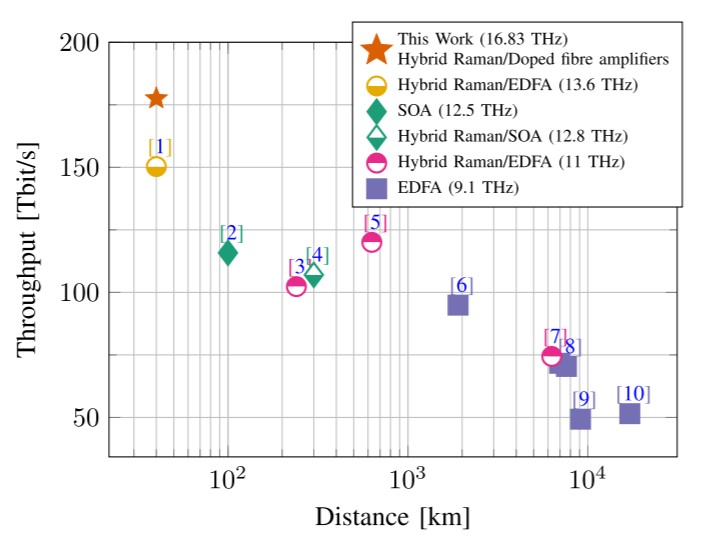Fiber optics support much of the telecommunication services we use today. From internet and TV to phones, the technology is responsible for carrying more than 95% of our global internet data. However, with internet traffic on the rise, the need to meet future data demands has become paramount. A research team from the Optical Networks Group at University College London may have solved the challenge using a hybrid amplification technique that allowed them to set a new world record for singlemode optical fiber (SMF) data transmission.
The team was able to send 178 terabits per second through the SMF – twice the data rate of systems used today. It’s enough capacity for a single fiber pair to carry two simultaneous Zoom calls for all 50 million U.S. school-aged children. And even if the school children aren’t cheering yet, industry leaders are. That’s because such advances in fiber optics can also benefit businesses in the medical, defense, and manufacturing industries, among others. Today, fiber optics is the most popular and fastest mode of broadband technology due to its higher bandwidth capabilities and transmit speeds.
SMF is a type of optical fiber that is commonly used for signals including TV, Internet, and telephone, where data is transmitted over a long distance. Over the last decade, the scientific community has focused on increasing SMF data by improving the signal quality for a given transmission bandwidth. To do this, they’ve explored the use of different optical amplification techniques to extend the SMF bandwidth. While these solutions have resulted in record data rates, they’ve proven to be unsustainable for long-haul transmission systems, such as nationwide or worldwide communications.

Figure 1: The record data throughput versus other amplification techniques for single mode fiber
To achieve the world record throughput of 178 Tbit/s over 40km, the team engineered a system that was able to transport data through the widest continuous transmission bandwidth of 16.8THz. This was done by simultaneously using the S-, C- and L-band SMF transmission windows, which is where fiber optic communication is conducted. The team used a combination of amplifiers – Raman amplification, Erbium Doped Fiber amplifiers (EDFA) and Thulium doped fiber amplifier – to achieve this transmission window.
This hybrid strategy allowed the team to create a wavelength-dependent signal-to-noise ratio (SNR) that gave them the ability to increase the overall data throughput. This was done by designing new geometrically-shaped (GS) constellations that could be tailored for the SNR of each frequency, thereby maximizing the information rate of each individual channel and achieving record speeds.

Figure 2: Combination of GS constellations used to achieve world-record throughput.
“The benefit of this technique is that it can be deployed on already existing infrastructure, cost-effectively, by upgrading the amplifiers that are located on optical fiber routes at 40-100km intervals,” said Lidia Galdino, a lecturer and Royal Academy of Engineering research fellow at University College London. The ability to expand data capacity without having to lay new fiber-optic cables would create significant cost savings.
High-capacity, ubiquitous broadband communication is essential to economic growth, and realizing the full potential of optical fibers continues to be a priority. As 5G, the internet of things (IoT) and smart cities become a reality, research teams like Galdino’s will continue to explore SMF’s capacity and ability to transform people’s lives. This was just the first step.
For more information on broadband networks, visit the IEEE Xplore digital library.





